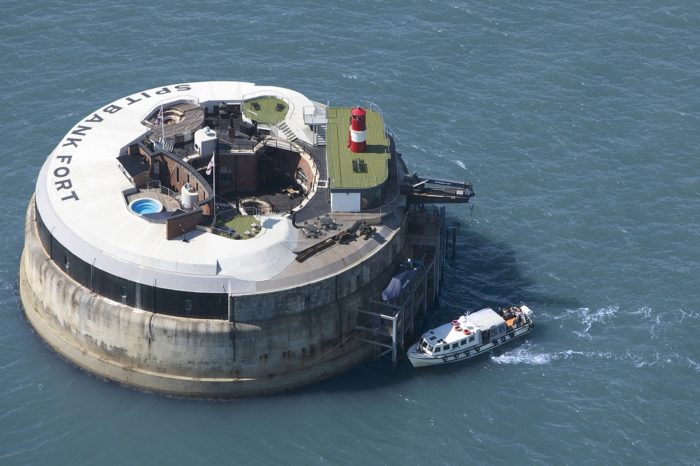Eccentric hotels: Unusual places to stay in Britain
Adrian Mourby checks in to eight of Britain’s most unusual places to stay, from a converted prison and fantasy village, to an island hotel frequented by film stars
Britain is full of beautiful purpose-built hotels, opened by pioneers like César Ritz and Richard D’Oyly Carte (of Savoy fame). However, it also leads the world in converting existing buildings into hotels. Some of the more eccentric structures that have been repurposed include prisons, churches, fortresses, and even whole villages. It seems the British will convert anything into a hotel.
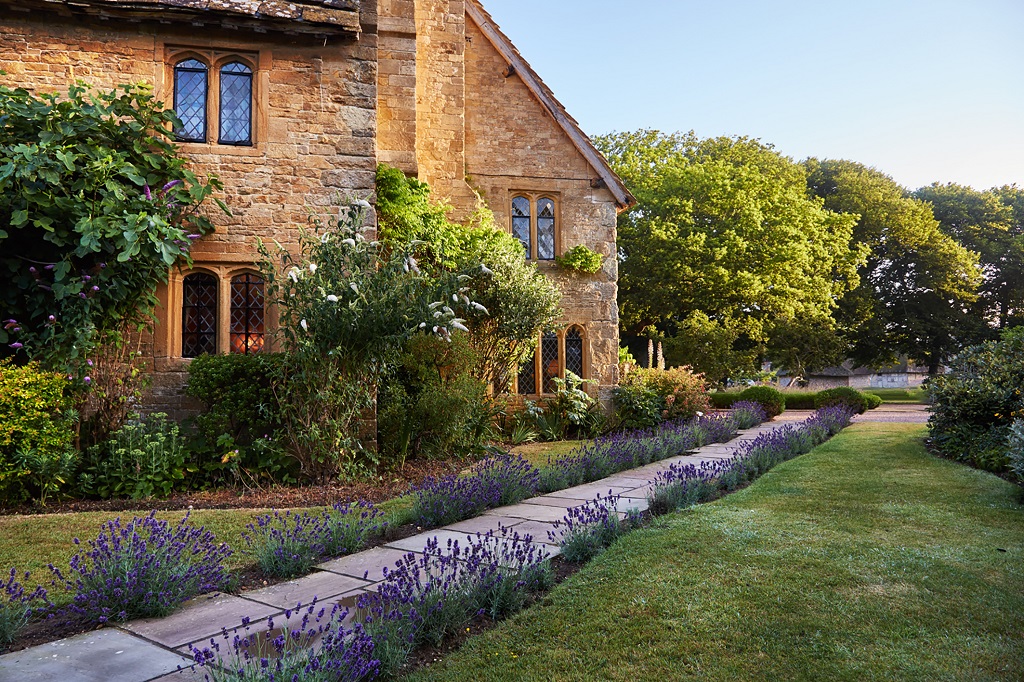
Take Bailiffcourt, for example. Sitting on the Sussex coast, it consists of a series of medieval houses, barns and stone cottages, all reassembled on the private estate of the wealthy Guinness family. Only the 13th-century chapel is in its original place. Walter Edward Guinness, 1st Baron Moyne, and his wife, Lady Evelyn, intended Bailiffscourt as a place for roaring parties. She had her bedroom in the Manor House (now the hotel’s reception) while he had his in the Thatch House, a reconstructed medieval building that he shared with their children. An underground passageway linked the two houses so that Lady Evelyn could visit her family when she wasn’t entertaining.
Over the years more buildings were added to the estate by the amateur architect Amyas Phillips, whom
the Moynes had met and befriended when he was running an antique shop. After Lord Moyne’s assassination in 1944, the Guinness family sold the estate to a German refugee, Emmy Birrer, who turned it into a 39-room hotel.
Today you could be forgiven for thinking that Bailiffscourt is the remains of a medieval Sussex village, but it’s a very convincing fake. The fact that Lord Moyne bought up all the surrounding shoreline to make sure modern buildings did not undermine the integrity of his historical folly means that Bailiffscourt represents a notable gap in the Brighton to Bognor Regis coastline.
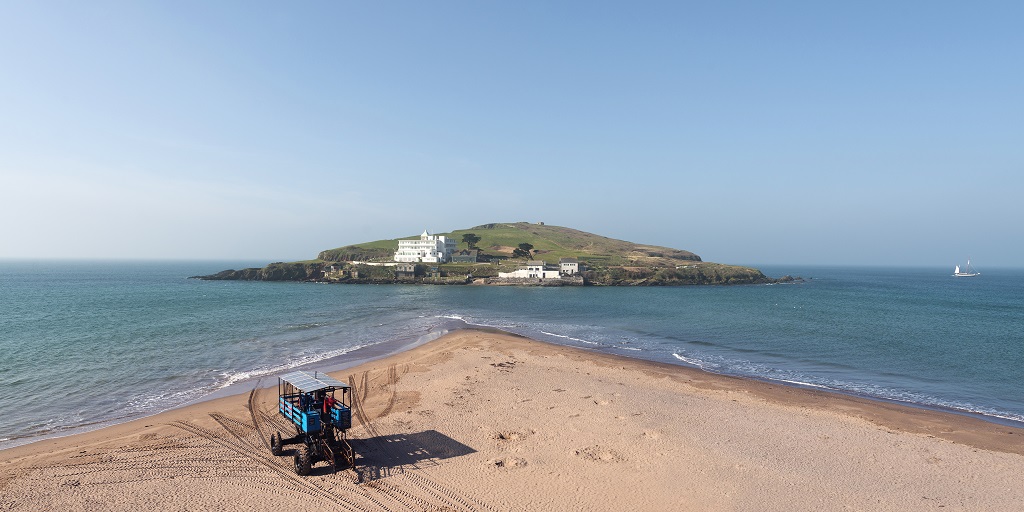
Further west on England’s south coast lies Burgh Island, which is cut off from the rest of Devon at high tide. After the First World War, film director Archibald Nettlefold built a house there, but he became so tired of his friends treating it like a hotel that he turned it into one in 1929. Author Dame Agatha Christie and playwright Sir Noël Coward came to stay, as did the Duchess of Windsor who – according to hotel legend – occupied the Beach House before her marriage to Edward VIII. Like so many British hotels, Burgh Island was commandeered during the Second World War and didn’t recover from the experience for decades. It was used as a ruined, Xanadu-like location in the 1965 John Boorman film Catch Us If You Can. When restoration began in 1986, the building became more truly Art Deco than ever before, with statuettes of athletic women on every floor; they hold up light fittings, they are draped round picture frames, they’re even supporting the bar.
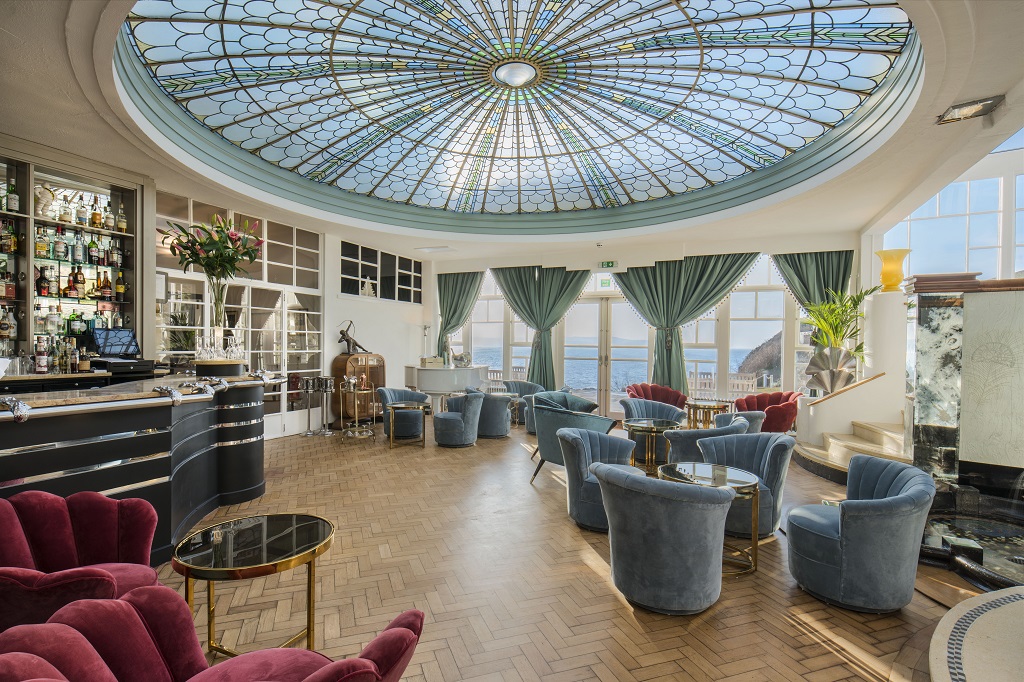
The bedrooms are indebted to Art Deco and named after glamorous figures from the 1930s, such as pilot Amy Johnson, singer Josephine Baker and Major “Fruity” Metcalfe, who was aide de camp to Edward VIII. What makes Burgh Island truly unique, however, is its dress code. If you wish to dine in the ballroom, the requirement is strictly black tie. Most guests play up to this gorgeous charade as there is a dance band at the weekend and a pianist midweek.
The sight of so many hotel guests dancing as if they are extras in an Agatha Christie murder mystery proves that Burgh Island not only looks eccentric, it lives eccentric. As the hotel itself claims, it is impossible to be overdressed here. By complete contrast Oxford’s Malmaison is a former prison that was converted into a 95-bed hotel after it ceased being a place of incarceration 24 years ago.
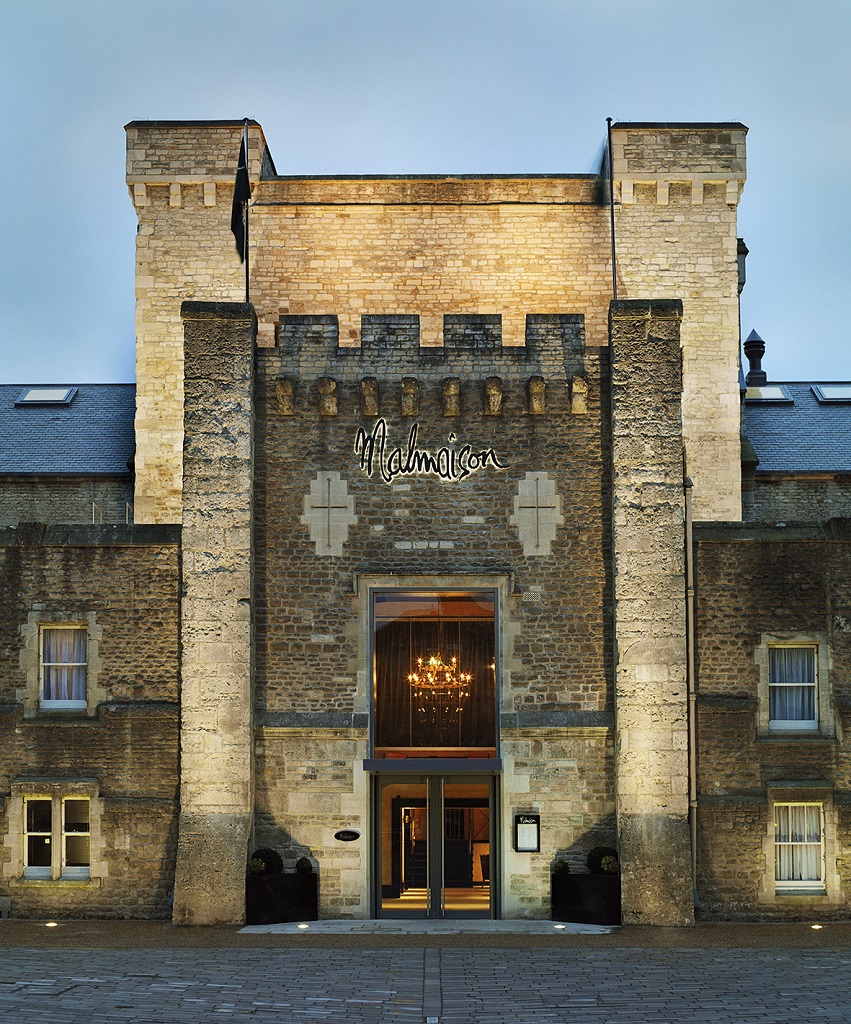
The Malmaison company has built a brand out of repurposing old buildings as hotels across Britain, including a Greek revival church in Glasgow, a cooperative warehouse in Newcastle, and a former Royal Mail sorting office in Birmingham. As a classic Victorian slammer, Britain’s only former prison hotel once featured in both the 1969 film The Italian Job and the popular British TV comedy Porridge. Its distinctive layout has hardly been changed but thankfully the hotel’s bedrooms are more spacious, given they consist of three cells put together. One cell remains as it was, an alarmingly pokey reminder that three criminals would have once shared that space.
Another Victorian oddity turned into a hotel is Spitbank. This was one of Lord Palmerston’s “follies”. After the defeat of Napoleon in 1815, the British still did not trust the French and so Palmerston, the Prime Minister at the time, ordered a large number of new fortresses to guard the south coast of England and its harbours. Spitbank was one of four forts constructed in the sea off Portsmouth Harbour in Hampshire.
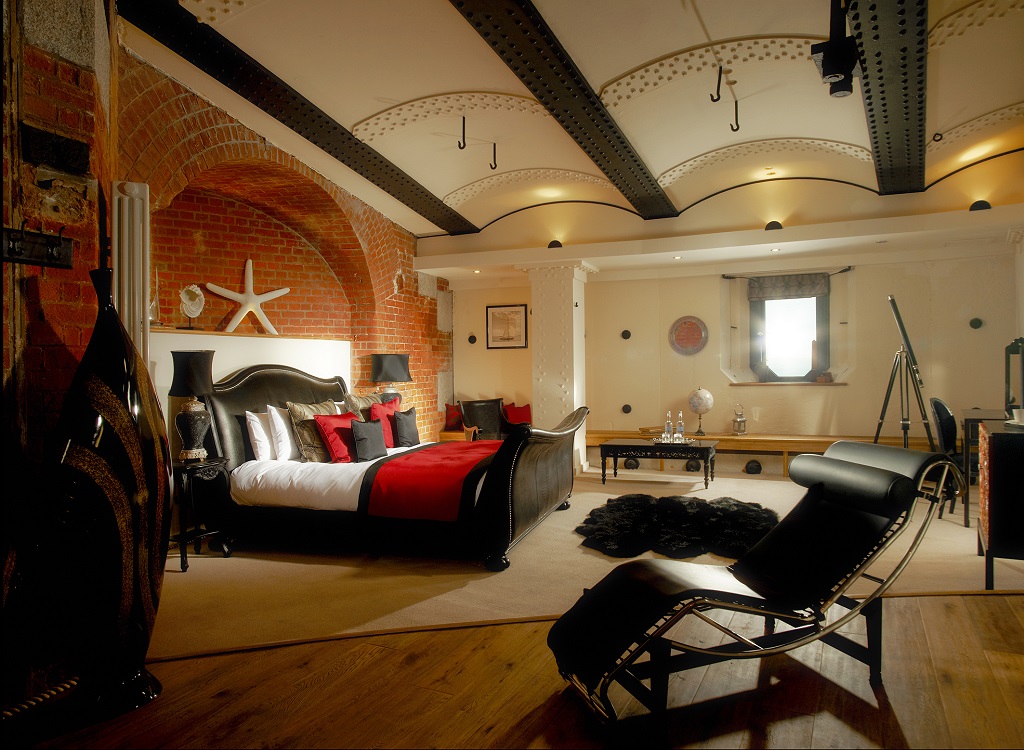
It was circular in form and dramatically functional in appearance, yet none of Lord Palmerston’s follies ever saw action and they were eventually sold off to developers in the 1980s. By 2012, Spitbank had been converted into a nine-suite luxury hotel. Today it can only be accessed by a ferry that moors below its original seagate. Meals are taken in the officers’ mess, with drinks served in a brick cellar where munitions were once stored. For modern comfort, a most un-Victorian jacuzzi has been constructed on the roof.
A more traditional and elegant hotel is Berkshire’s Vineyard, which was acquired by the founder of the Classic FM station, Sir Peter Michael, to house his wine collection. To enter, you pass over a glass floor, below which are wine cellars containing some 30,000 bottles. The motto of the hotel is “eat, sleep, and drink wine” and all the bedrooms are named after favourite vintages (with a special bottle selected for each guest to taste on arrival). Wine imagery is everywhere, including a six-foot corkscrew in reception. On the wall of the foyer bar is a huge trompe l’oeil painting depicting the so-called Judgment of Paris, a 1976 blind wine tasting in which Californian wines shocked the world by triumphing over the French. All the real-life wine experts are clearly stunned, and Sir Peter has cheekily had himself painted in to one side of the event (though he was not present).
In the large, circular dining room, waiters serve a tasting menu with wine provided in black glasses so you can’t see the colour: a real challenge. This is a beautiful hotel conceived by a wealthy man keen to share his obsession. In Scotland, The Witchery is a 16th-century house just outside the gates of Edinburgh Castle. For more than 40 years, owner James Thomson has amalgamated a number of buildings to create this rambling hotel, but it is the louche, faux-Victorian design of each bedroom that makes The Witchery unique. This is decor so far over the top it’s an artform in its own right: candelabras jostle with roll-top baths, along with exotic statues, tapestried walls, large red leather armchairs and theatrical swags. Thomson continually scours auction rooms and when he has enough eccentric heritage items, he creates another room. With just eight bedrooms for now, The Witchery is a triumph of panache over good taste.
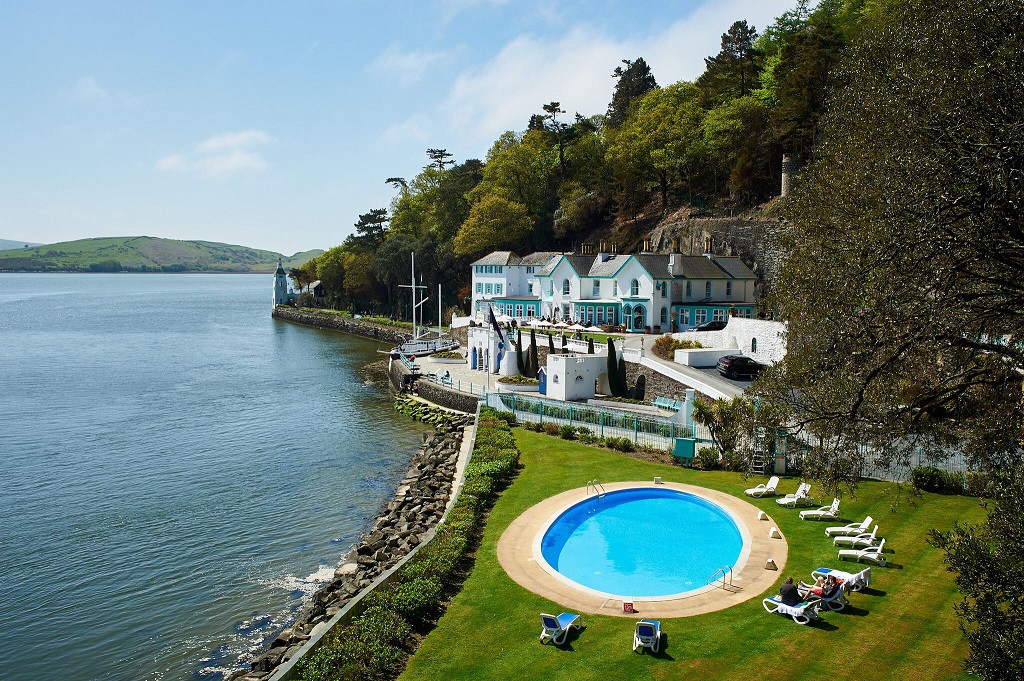
At the Portmeirion village on the coast of North Wales, the highly eccentric architect Sir Clough Williams Ellis created a “home for distressed buildings” in the 1920s and 30s. Sir Clough, who hated modernism and brutalism, bought up bits of old buildings that were being demolished and reassembled them as houses and cottages in his fantasy village. At the centre of the village is Clough’s 14-bedroom hotel with an enormous Italianate fireplace, a mirrored drawing room that looks 18th century, and a white spherical chair in the reception that was used in The Prisoner TV series, which was shot in the village in 1966. In his typically eccentric fashion, Clough built a concrete boat on the quayside outside the hotel that remains in place today. He named the faux boat, Amis Reunis, although he insisted the name meant nothing.

Bringing our story up to date, in the countryside outside Nottingham, a woman named Imogen “Imo” Skirving had a dream in which she was told to turn her family home into a hotel. The year was 1983 and Imo had no experience as a hotelier, but she threw herself into decorating Langar Hall and being hospitable.
The gamble paid off, even though the hotel’s design is eccentric to say the least: portraits of Imo are everywhere; Doric columns rescued from her grandmother’s home hold up the dining room ceiling; the bar has stools were originally tall shoe-shine chairs; and the lavatories are full of explicit nudes drawn by her brother. When Imo found that Admiral Lord Howe was buried in the adjacent churchyard, she inaugurated an annual celebration of his most famous victory, which involves pouring some Champagne over his grave – and drinking the rest. Imo sadly died in 2016 but her granddaughter, Lila, now runs Langar Hall in her eccentric style.

